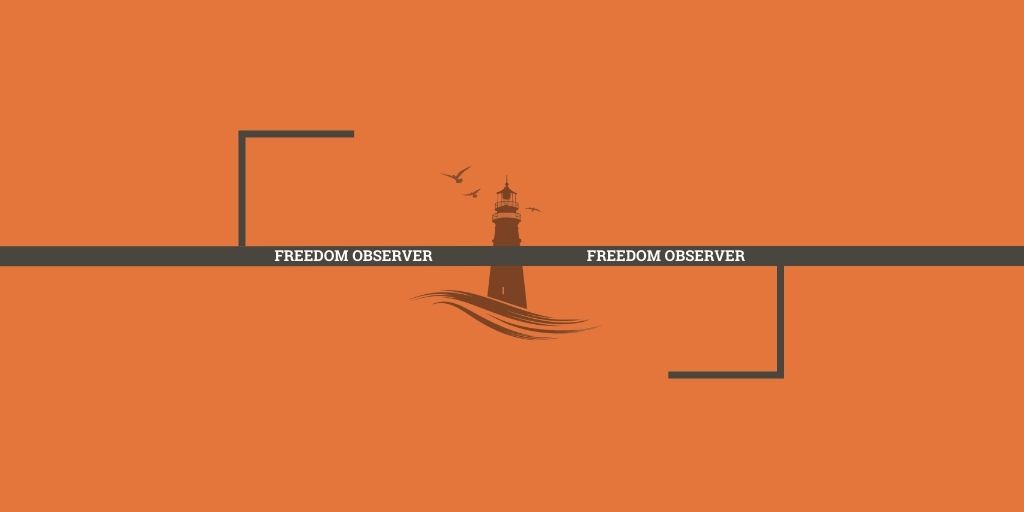From Editor-in-Chief
We’ve completed another two-week period with no significant developments to shift the persistent pessimistic climate that has gripped Turkey in a more optimistic direction. However, this hasn’t stopped the AKP administration and its supporters from presenting populist rhetoric and empty promises that diverge from reality.
One of these empty promises is President Erdoğan’s call—echoed with MHP’s support—for a “civil” constitution to free Turkey from the so-called “coup constitution” (the current 1982 Constitution) and prepare the country for the future. It would hardly be unfair to characterize this call as a “promise divorced from reality.” It’s highly likely that, as with the 2017 changes, the Erdoğan-Bahçeli duo will find a way to pass a comprehensive constitutional amendment under the guise of a “new constitution” in Parliament.
Since the May 2023 elections, the main opposition party, CHP, has been on the rise and appears confident that it will come to power in the next election. Party Chairman Özgür Özel is in the public eye nearly every day with his critiques of government policies and calls for early elections. Recently, the CHP garnered attention with its “Bylaw Congress,” but it seems the party may have a more pressing need: revising its ideology and program to align with current realities and to embrace broader segments of society.
However, Özgür Özel’s remarks regarding the alternative oath-taking ceremony staged by newly graduated lieutenants under the “We are Mustafa Kemal’s soldiers!” slogan suggest that, despite efforts toward “renewal,” the CHP’s traditional reflexes remain largely unchanged.
On the Other hand Turkey’s foreign policy has also seen notable shifts recently. As is well known, the AKP administration has, in recent years, strained relations with our southern neighbors, Syria and Egypt, through its interventionist policies aimed at expanding influence in the Middle East and supposedly bringing democracy to certain Arab nations. For some time now, Turkey has been seeking normalization with these countries. Signals from Syria suggest that it may still be too early to restore relations with Turkey, while Egypt, after initial hesitation, has responded more positively to Turkey’s overtures. Indeed, Egyptian President Abdel Fattah el-Sisi made an official visit to Turkey last week. Though the visit was not particularly warm, several agreements were nevertheless signed between the two countries.
* Prof. Dr. Mustafa Erdoğan
Rental of Uncultivated Agricultural Lands
The “Regulation on the Rental of Uncultivated Agricultural Lands for Agricultural Purposes,” published in the Official Gazette on August 22, 2022, allows the Ministry to rent out agricultural lands owned by individuals or entities that have remained uncultivated for two consecutive years. This regulation was essentially grounded in a legal amendment made in 2023.
The basis of this regulation is rooted in the second paragraph added to Article 8/K of the Soil Protection and Land Use Law No. 5403 by Article 37 of Law No. 7442, dated March 23, 2023. The rationale for this amendment highlights that approximately 656,000 hectares of agricultural land in Turkey remain idle for various reasons and that reviving these lands could prevent an estimated annual economic loss of around 14 billion TL. Parliamentary discussions indicated minimal opposition to this regulation, with only an HDP representative offering political criticisms, as noted in the commission report.
Although CHP lawmakers filed a constitutional lawsuit challenging several provisions of Law No. 7442, Article 37 was not among those contested.
It’s challenging to understand why such a regulation was implemented, given that it constitutes a clear interference with property rights protected under the Constitution. Firstly, it’s hard to argue that farmers willing to engage in agricultural activities cannot find rental land. Many farmers have been forced to cease agricultural production due to high production input costs and the challenges in selling and marketing their crops. In light of this, it remains a significant question where farmers willing to rent these unused lands for profitable agricultural production will be found.
It’s anticipated that the demand for such rentals may come from industrial agricultural producers, particularly international companies focusing on oilseed production. If this is the case, it’s not difficult to see why these companies would prefer renting directly from public authorities rather than negotiating with individual landowners.
Rental rates are to be determined by the Land Rental Commissions based on “market value.” However, these commissions consist entirely of public officials, with no representation from farmer organizations or Agricultural Chambers. Similarly, the Land Identification Commissions, responsible for selecting the land available for rental, also lack any representation for farmers, being composed of public officials and village headmen, with decision-making power resting primarily with the public officials.
There are also fundamental issues concerning the identification and rental procedures for these lands. First, neither the identification of lands nor the rentals are formally notified to the landowners; instead, they are finalized solely through announcements at the local level and on the website. This enables land to be rented out without the owners’ knowledge, with rental fees deposited in a public bank on their behalf. If owners wish to contest the identification or rental, the process does not automatically halt; rather, their objections are reviewed and finalized by the commissions. Therefore, not only is landowner consent disregarded, but even if they object, their land can still be rented to others against their will. This effectively removes the right of disposal, a fundamental aspect of property rights, for these lands.
Moreover, it has been made possible to rent out unused portions of partially cultivated lands. So, farmers might wake up one day to find half of their land being cultivated by someone else, and it shouldn’t come as a surprise.
One of the problems this regulation is likely to cause is the harm it will inflict on other farmers due to the water scarcity it will create. The regulation does not address how to resolve conflicts arising from potential irrigation water shortages if all available land is cultivated through rentals. Additionally, there are no provisions in the regulation for addressing any damage that renters may cause to the land through excessive fertilization, irrigation, pesticide use, and similar activities. If, as anticipated, large national or international companies rent these lands, it is not difficult to foresee significant harm to other farmers still engaged in production, as well as major issues in food production. It is also clear that a food crisis resulting from this would affect the entire country.
Finally, setting everything else aside, the fact that this regulation constitutes a clear intervention in property rights, a fundamental constitutional right, raises concerns. As the Constitution mandates, any such intervention should be implemented through “law,” not an administrative action like a regulation, making this approach difficult to justify.
* Doç. Dr. Ali Rıza Çoban – Constitutional Lawyer
A Surprise Development in Istanbul’s Politicized Yellow Taxi Crisis
Anyone who lives in, visits, or even briefly passes through Istanbul has likely experienced frustration—either from being unable to find a taxi or from the quality of service when they do. This issue, on the agenda for decades, has surfaced more acutely in recent years, becoming a national debate, especially during election periods.
The judiciary’s decision to halt Uber’s operations and restrict access on grounds of unfair competition, along with the government’s stance in favor of yellow taxis, effectively blocked alternative services. Increasing the number of taxis could have eased this problem to some extent, but accomplishing this took more than five years. Following the 2019 local elections, Istanbul Metropolitan Municipality (IMM) Mayor Ekrem İmamoğlu’s attempts to increase the number of taxis were frequently obstructed by the AKP. Although the CHP won a majority in the municipal council in the 2024 local elections, a 2020 amendment by the Ministry of Environment and Urbanization altered the structure of the Transportation Coordination Centers (UKOME), limiting the municipality’s decisive role in urban transport. The number of public institution members was raised from 10 to 14, while the number of representatives from the Metropolitan Municipality remained at 11, shifting the balance in favor of the government. Consequently, the opposition’s council majority could not overcome this obstacle.
At this point, the issue has evolved beyond a simple transportation problem, becoming a symbol of the power struggle between the ruling party and the opposition. In other words, yellow taxis have taken on the role of a new front line in politics, adding a political dimension to Istanbul’s transportation chaos. Without delving into theory, it’s worth noting that the yellow taxi problem is essentially a collective action problem. More specifically, there is a conflict of interest between taxi license owners—who protect their interests through lobbying or political connections—and the broader public, who bear the costs but cannot mount an effective opposition due to the small individual burden and lack of organization.
Institutions under AKP administration have sided with these interest groups for years instead of addressing this issue in favor of the public, consistently ignoring societal demands.
However, İmamoğlu’s persistent focus on this issue, his re-election, and the growing public discontent appear to have prompted the AKP to soften its previously rigid stance. Last week, the “App-Based Taxi Transportation System” proposed by Istanbul Metropolitan Municipality (IMM) at the UKOME meeting was unanimously approved.[1] Under this system, 2,500 new taxis will be added to Istanbul, operating exclusively through an app and not picking up passengers from the street. Although this increase will not fully resolve the problem, as Istanbul still lags behind global cities in terms of taxis per capita, it marks a positive change. It’s also a noteworthy step for Istanbulites, as the AKP appears to be yielding in favor of public benefit.
Shortly after this decision, a senior official speaking to Bloomberg revealed that the AKP government is working on a new legislative proposal to increase Istanbul’s taxi count by 75 percent, aiming to bring the total to approximately 32,000. It’s crucial for these steps to continue, as they are key to achieving a sustainable transportation system for the city.[2]
* Dr. Ömer Faruk Şen– Missouri University
Medium-Term Program Projections
The Medium-Term Program (OVP), announced by Vice President Cevdet Yılmaz on September 5, outlines economic expectations for the next three years. Intended to serve as a roadmap, the OVP has often faced criticism for its inconsistencies and its track record of missing targets. These criticisms have eroded confidence in the program and diminished its credibility. However, with the new economic administration’s return to traditional policies, changes at the central bank, and expectations for a more stringent adherence to these policies after the local elections, interest in the OVP had somewhat revived. Yet, as in the past, the program still contains inconsistent and overly optimistic projections.
What Does the Medium-Term Program Promise?
The Medium-Term Program (OVP) revises the 2024 economic growth forecast downward, from 4% to 3.5%. However, growth targets for subsequent years appear quite ambitious given the current economic conditions, with goals set at 5% for 2025, 4.5% for 2026, and 5% for 2027. According to these targets, per capita income is projected to reach $15,551 in 2024, $17,028 in 2025, $18,990 in 2026, and $20,420 in 2027. To meet these income goals, the average USD/TRY exchange rate is estimated at 35.5 TL for 2024, followed by 42 TL, 44.4 TL, and 46.9 TL for 2025, 2026, and 2027, respectively.
Inflation expectations are set at 41.5% for 2024, 17.5% for 2025, 9.7% for 2026, and 7% for 2027. In line with these projections, the unemployment rate is expected to be 9.3% in 2024, 9.6% in 2025, 9.2% in 2026, and 8.8% in 2027. The budget deficit target is 4.9% for 2024, 3.1% for 2025, and 2.8% and 2.5% for the following two years, respectively.
The Relationship Between Growth and Inflation
Given that inflation remains the central focus of Turkey’s economic agenda, the program’s inflation forecasts are its most attention-grabbing indicator. For these inflation projections to be realized, other economic indicators must align with them. Examining growth targets is particularly relevant here. While the program envisions inflation dropping from its current 51.97% to 7% by the end of 2027, it does not anticipate a significant slowdown in economic growth, setting an ambitious growth target of 5% for 2025. With inflation expected to fall to 17.5% by the end of 2025 and growth projected at 5% for the same period, a significant inconsistency stands out, as it seems unlikely that inflation can decline without tightening economic activity.
In the early 2000s, inflation fell sharply amid rapid economic growth, but that period was marked by a strong political and economic narrative and robust foreign investment supporting the favorable outlook. Today’s conditions are markedly different, making it overly optimistic to expect a drop in inflation without an economic slowdown. Indeed, the recent decline in inflation has also resulted from a deceleration in economic activity.
In this light, the expectation of both strong economic growth and a sharp decline in inflation over the next three years appears inconsistent. Additionally, in last year’s OVP, 2024’s growth was projected at 4% with an inflation forecast of 33%. This year, however, while the growth expectation has been reduced to 3.5%, the inflation forecast has risen to 41.5%, clearly highlighting the program’s inconsistencies. Lower growth has been paired with higher inflation. Expecting an improvement in the current account deficit alongside high growth projections also reveals a contradiction. Although the current account deficit may decrease in the short term, rising domestic demand due to an economic rebound could drive it up again. Lastly, the forecasted sharp decline in inflation alongside a reduction in unemployment further underscores these inconsistencies.
Considering the alignment between the economic policymakers and the Central Bank leadership involved in preparing the OVP, the inconsistency between growth targets and inflation projections is difficult to explain. Either the program was not prepared with sufficient rigor, as in the past, or the growth targets were designed more to satisfy political interests than to reflect economic reality. Given the internal criticisms directed at Mehmet Şimşek’s administration from within the ruling party and President Erdoğan’s prioritization of economic growth, it’s likely that the OVP was shaped, at least on paper, to meet these expectations.
* Dr. Caner Gerek
1 https://www.bbc.com/turkce/articles/cdjwmerd9wvo
2 https://www.bloomberght.com/iistanbul-da-taksi-sayisinin-artirilmasi-planlaniyor-2359133





